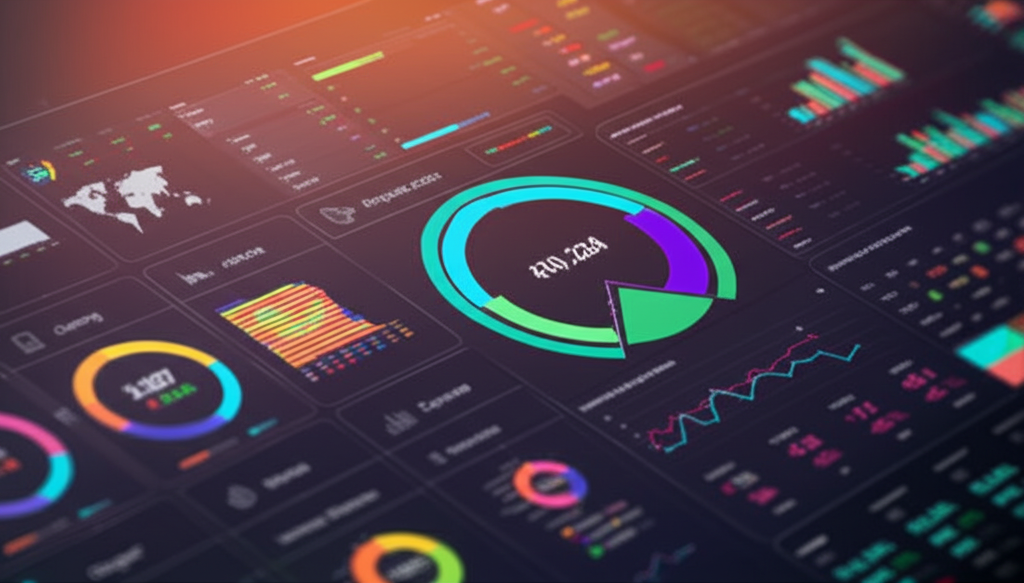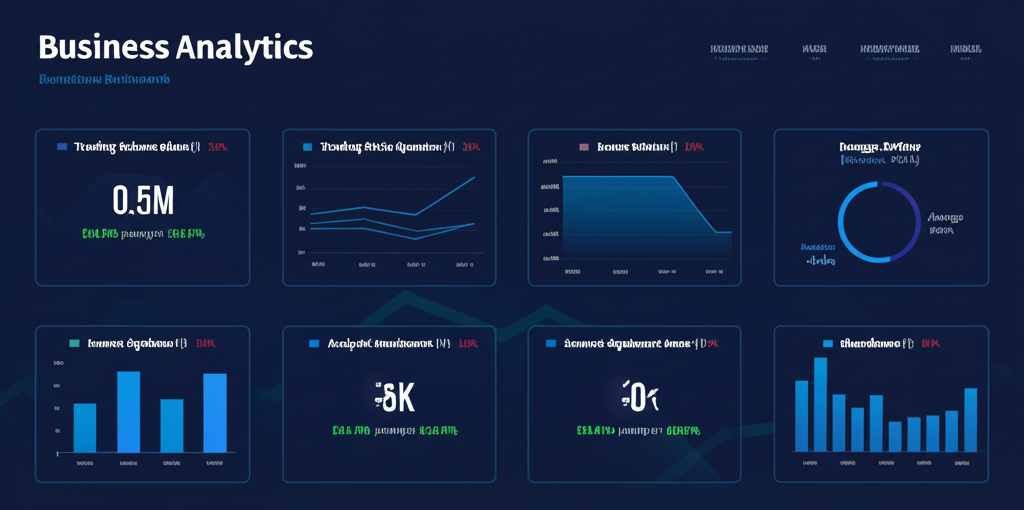IR Metrics That Matter: Beyond the Standard KPIs

Measuring the effectiveness of investor relations programs has traditionally focused on a handful of standard metrics like share price performance, trading volume, and analyst coverage. While these indicators provide valuable insights, forward-thinking IR teams are expanding their measurement approaches to gain deeper understanding of program effectiveness and demonstrate the strategic value of IR.
The Evolution of IR Measurement
The approach to measuring investor relations effectiveness has evolved significantly over the past decade. What began as a focus on basic activity metrics has expanded to include sophisticated analytics that provide more nuanced insights into program impact and ROI.
This evolution reflects the increasing strategic importance of the IR function and growing expectations from management teams and boards for IR to demonstrate its contribution to corporate objectives and shareholder value.
Traditional IR Metrics: A Foundation
Standard IR metrics continue to provide valuable baseline information:
Market Performance Metrics
- Share price performance vs. relevant indices and peer groups
- Trading volume and liquidity
- Valuation multiples relative to peers
- Volatility measures
Ownership Metrics
- Institutional ownership percentage and changes
- Investor concentration/diversification
- Investor turnover rate
- New investor additions
Analyst Coverage Metrics
- Number of covering analysts
- Consensus estimates vs. actual results
- Recommendation distribution
- Target price ranges
Activity Metrics
- Number of investor meetings and conference participations
- Earnings call participation rates
- IR website traffic
- Email open rates and engagement
Advanced IR Metrics: Deeper Insights
To gain more comprehensive understanding of IR program effectiveness, leading companies are implementing more sophisticated measurement approaches:
1. Investor Quality and Alignment Metrics
Moving beyond simple ownership counts to assess investor quality:
- Investment Style Alignment: Percentage of shareholders whose investment style aligns with company strategy
- Holding Period Analysis: Average holding period of top investors and trends over time
- Ownership Stability Index: Composite measure of shareholder base stability during market volatility
- ESG Investor Penetration: Percentage of shareholders with strong ESG focus or commitments
- Investor Influence Score: Weighted measure of investor quality based on reputation, influence, and alignment
2. Message Penetration and Narrative Effectiveness
Assessing how well your investment story is understood and reflected:
- Key Message Adoption: Tracking how frequently key messages appear in analyst reports and media coverage
- Narrative Alignment: Percentage of analyst reports that accurately reflect company strategy and value drivers
- Sentiment Analysis: AI-powered assessment of tone and sentiment in coverage and social media
- Messaging Gap Analysis: Identifying disconnects between company messaging and market perception
- Share of Voice: Company mentions relative to peers in relevant financial media and platforms
3. Engagement Quality Metrics
Measuring the depth and impact of investor interactions:
- Engagement Depth Score: Composite measure of interaction quality beyond simple meeting counts
- Executive Time Optimization: ROI analysis of management time spent with different investor types
- Question Sophistication Index: Analysis of earnings call question complexity and strategic focus
- Digital Engagement Depth: Time spent on different IR content types and progression through materials
- Relationship Progression: Tracking investor journey from initial contact to investment
4. Targeting Effectiveness Metrics
Evaluating the success of investor targeting efforts:
- Targeting Conversion Rate: Percentage of targeted investors who initiate or increase positions
- Targeting Efficiency: Resources expended per new investor acquired
- Investor Acquisition Timeline: Average time from initial contact to investment
- Targeting Precision: Alignment between investor targeting criteria and actual investors acquired
- Non-Deal Roadshow ROI: Investment gained relative to resources expended on NDRs
5. Predictive IR Metrics
Forward-looking indicators that help anticipate market behavior:
- Ownership Volatility Indicators: Early warning signs of potential shareholder base changes
- Investor Sentiment Shifts: Leading indicators of changing investor perception
- Engagement Pattern Analysis: Identifying behavioral changes that may signal investment decisions
- Peer Trading Correlation: Changes in trading pattern relationships with peer companies
- Activist Vulnerability Score: Composite assessment of factors that may attract activist interest
Implementing Advanced IR Measurement
Data Integration and Analytics Tools
Building the technical foundation for sophisticated measurement:
- CRM Integration: Connecting investor interaction data with ownership and performance metrics
- Web Analytics: Implementing advanced tracking of digital investor behavior
- Natural Language Processing: Using AI to analyze earnings call transcripts, analyst reports, and media coverage
- Visualization Tools: Creating dashboards that make complex IR data accessible and actionable
- Predictive Analytics: Implementing models that identify patterns and predict investor behavior
Establishing IR Measurement Frameworks
Creating a structured approach to IR measurement:
- Metric Prioritization: Identifying the most relevant metrics for your specific IR program and company situation
- Measurement Cadence: Determining appropriate frequency for different metrics
- Benchmark Development: Establishing relevant comparisons for each metric
- Goal Setting: Creating realistic targets for key performance indicators
- Reporting Structure: Developing clear, actionable reports for different stakeholders
Case Studies: Innovative IR Measurement in Practice
Technology Sector
A leading technology company implemented:
- AI-powered sentiment analysis of earnings calls to identify subtle shifts in analyst perception before they appeared in written reports
- Digital engagement scoring that tracked how deeply investors engaged with different content types, allowing for more personalized follow-up
- Predictive models that identified patterns in investor behavior preceding position changes, enabling proactive engagement
Consumer Products
A global consumer products company developed:
- Message penetration tracking that measured how effectively key strategic messages were reflected in analyst reports and media coverage
- Executive time optimization analysis that quantified the ROI of management time spent with different investor types
- Investor quality scoring that went beyond AUM to assess alignment with company strategy and holding period patterns
Communicating IR Value to Leadership
Using advanced metrics to demonstrate IR's strategic contribution:
- Executive Dashboards: Creating concise visualizations of key IR metrics for C-suite and board
- ROI Analysis: Quantifying the return on IR program investments
- Competitive Benchmarking: Comparing IR effectiveness against peer companies
- Strategic Alignment: Connecting IR metrics to broader corporate objectives
- Continuous Improvement: Demonstrating how measurement drives program enhancements
Conclusion
As investor relations continues to evolve as a strategic function, measurement approaches must keep pace. While traditional metrics provide valuable baseline information, advanced analytics offer deeper insights into program effectiveness and strategic impact.
By implementing sophisticated measurement frameworks that go beyond standard KPIs, IR teams can better understand investor behavior, optimize resource allocation, demonstrate program value, and ultimately contribute more effectively to corporate objectives and shareholder value creation.
The most successful IR programs will be those that combine traditional metrics with innovative measurement approaches to create a comprehensive view of performance and drive continuous improvement.


